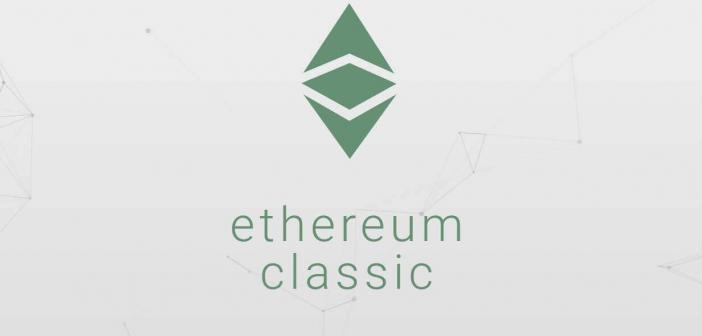What is Ethereum Classic?
When the Ethereum and the Ethereum Classic communities parted way it was the most high-profile dispute in the history of the cryptocurrency community. The high-profile hacking of the Ethereum Decentralized Autonomous Organization (DAO) had precipitated the dispute splitting the community into two separate crypto projects, i.e. Ethereum (ETH) and Ethereum Classic (ETC). This begets the question: what is Ethereum Classic?
Ethereum DAO: a venture capital fund within the Ethereum community
The Ethereum blockchain network with its’ Ethereum Virtual Machine (EVM) and smart contracts paved the way for developing cryptocurrency projects and distributed apps (DApps). The community decided to create a venture capital (VC) fund to ensure funding of promising DApps. They called it the Ethereum Decentralized Autonomous Organization (DAO).
Enroll Now: Ethereum Development Fundamentals Course
A community member needed to buy DAO Tokens to become a member of DAO and vote her preference. The DAO rules will fund a DApp project if it had 20% of the votes. it worked using a complex smart contract, and the DAO ran as a layer on top of the Ethereum network.
The DAO members also had an exit route. If they didn’t agree with the selection of a DApp for funding, they could return their DAO Tokens and get their Ether back. The community called this the ‘split function’. The dissident members could create their own ‘Child DAO’, and even include the other dissident members.
The Ethereum DAO became popular quickly and had accumulated US $ 150 million worth of Ethers within a short time.
DAO hack: The dispute begins
The DAO smart contract had a flaw and on June 17th, 2016, a hacker made off with US $ 50 million worth of Ether exploiting it. The split function worked in a two-step process:
- Refund the users’ Ethers upon receiving their DAO Tokens when the user wanted to leave the DAO;
- Record the transaction in the blockchain.
The hacker created a recursive function in the request, which worked as follows:
- Return Ethers in exchange for DAO Token when a member leaves the DAO;
- Even before the transaction could be recorded in the ledger, the code would go back and execute the step 1 again!
The hacker stored the stolen Ethers in a ‘Child DAO’. Since the smart contract stipulated a 28-days period after exit when the member couldn’t spend the refunded Ether, the fund remained there. An important point to note here is that the Ethereum blockchain wasn’t hacked, rather the DAO layer operating on top of it was.
The Ethereum community needed to act, and act quickly! The news of the hack created a lot of concerns in the crypto community.
Ethereum DAO conflict: the difficult choices
The community had three options:
- Take no action: Some in the community supported this option because they were purists and wanted to treat the code as the supreme law of the network.
- A soft fork to isolate and lock the stolen Ether, and subsequently to segregate and ignore any block containing a transaction that would help the hack to move the stolen funds. A soft fork is when the upgraded software is backward-compatible, and even if a node doesn’t upgrade it can talk to the upgraded nodes. The majority of the community supported this, however, it was later found that this would create the possibilities of a ‘denial of service’ (DoS) attack. Ethereum guards against DoS attacks because if a hacker gives a miner very large complex calculations with the intention of flooding the network, the hacker also needs to spend a large amount of Ether, and it’s cost-prohibitive. However, after the proposed soft fork, a hacker would be able to trick a miner. The hacker can request transactions that would interact with the DAO, and make the miner do endless large calculations without spending almost no Ether and thereby flood the network!
- The only choice left was a hard fork, which means an upgrade that’s not backward-compatible. In this case, it meant that the community will split and take the state of the network just before the DAO attack and run a separate blockchain with that. The new chain was called “Ethereum” (ETH). The community members that supported the hard fork also created a smart contract to refund the Ether stolen from the members during the DAO attack.
Birth of the ‘Ethereum Classic’: the voices against the hard fork
The decision of the hard fork split the community. The supporters believed that the stolen Ethers should be returned to the people who had lost the fund due to the DAO attack. On the other hand, the people against the hard fork believed that the decision went against the principles of complete decentralization of blockchain, and the primacy and immutability of smart contracts. The part of the Ethereum community that decided against the upgrade necessitated by the hard fork continued with the old chain, and they named their cryptocurrency “Ethereum Classic” (ETC).
As things stand, Ethereum is valued far more than Ethereum Classic, both in terms of the price and the market cap. There is more, as follows:
- Ethereum is seen as the community that faced a crisis triggered by a loophole in the code but took a decision to refund the stolen money to the affected members, and went ahead with it. In comparison, Ethereum Classic community is seen as the one that stood with the hacker, purely because of their belief of supremacy and immutability of code. The free market indicators have trusted Ethereum more than Ethereum Classic.
- Ethereum community has retained the support of its’ most creative and enterprising members and has gone from strength to strength. The planned transition to the proof-of-stake (PoS) algorithm is a work-in-progress, and it’s expected to make Ethereum far more scalable (see the comparison between ‘proof-of-work’ and ‘proof-of-stake’). The associated new ‘Casper’ protocol and the planned implementation of sharding will also benefit the Ethereum network. Ethereum Classic will not have any of these upgrades.
- The ‘Ethereum Enterprise Alliance‘ (EEA), a consortium of 200 corporations working with the Ethereum project for development of enterprise blockchain technology, is a further indication of the trust the market has on the Ethereum community. In comparison, the Ethereum Classic community has very few backers.
Learn more,




